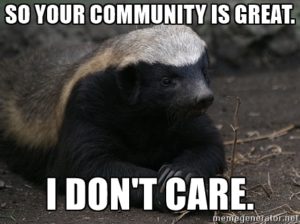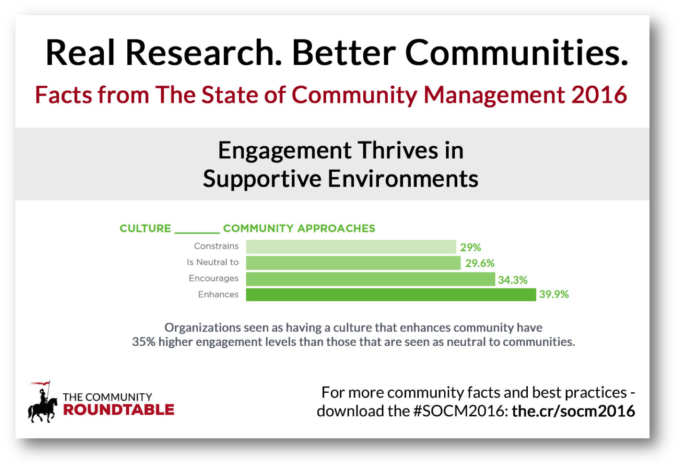By Ted McEnroe, Director of Research and Training, The Community Roundtable
 Convincing skeptics about the value of community is a part of the job for all too many community managers. When faced with adversity, there’s almost a “fight or flight” choice. The “fight” choice in this case is to strive to win converts and create a better vibe for the community. The “flight” response is to turn inward, recognize the difficulty of engaging the larger organization and focus on creating the best possible community.
Convincing skeptics about the value of community is a part of the job for all too many community managers. When faced with adversity, there’s almost a “fight or flight” choice. The “fight” choice in this case is to strive to win converts and create a better vibe for the community. The “flight” response is to turn inward, recognize the difficulty of engaging the larger organization and focus on creating the best possible community.
While focusing inward may have short-term advantages, the research suggests that in the long run, working to improve the perception and understanding of community in the organization pays off.

There are two elements of this graphic I want to highlight. The first is that organizations whose culture encourages or enhances community approaches get significantly higher engagement in the community itself. It’s not a surprise. If the organization values community, then the people in the organization can more readily see evidence of that value even before they get involved. It effectively pre-qualifies members for the community, and then once they are in, the community culture itself takes over.
But the second piece to me is just as interesting – maybe more interesting. It’s that there’s basically no difference between organizations that are neutral to communities and those whose cultures are perceived as constraining community. The enemy of community approaches, it seems, is not opposition to community, it’s not caring about community.
“If we build it, they will come around,” may not be the best approach, after all.
What does this mean for community managers? It may mean that connecting community to the organization needs to happen early on, even though that external effort may take up time that you’d rather use making the community stronger. Setting up the community, establishing your core group of advocates and setting behavioral norms don’t necessarily need buy-in from the larger organization, but once your community efforts are ready for prime time, having the organization on board becomes critical for the long-term success of the community program.
Bottom line: Healthy communities thrive in supportive environments.
We can’t wait to hear what you think – tag your thoughts with #SOCM2016 to join the conversation!
Are you a member of TheCR Network? Download the research inside the Network here.
